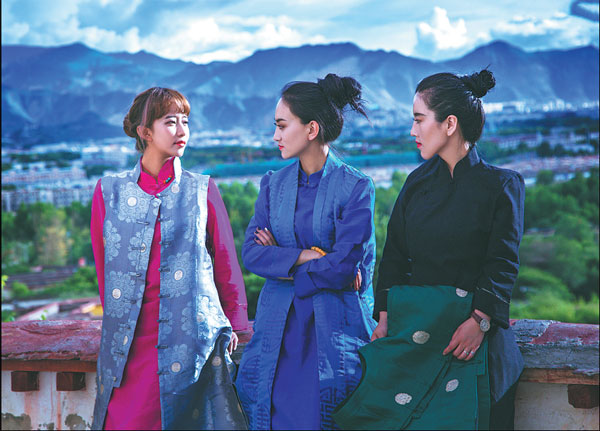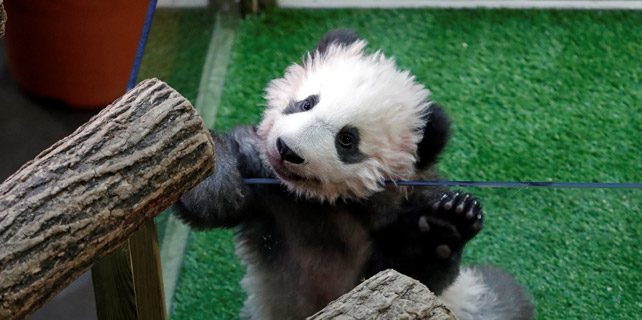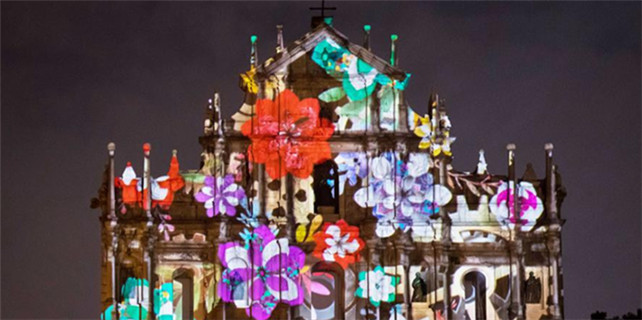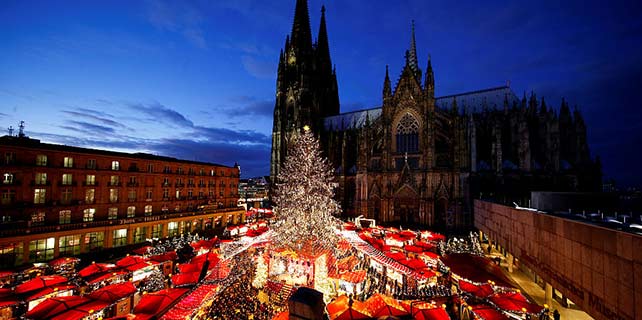Tibetan clothing asserts itself
It's finding a whole new audience and creating new revenue streams for ethnic communities
Traditional Tibetan clothing, with its uniquely bright colors, robe-like design and use of yak's wool, is carving a path to the wider world by adopting modern, fashionable elements.
Jeans and nipped-waist designs are in. The baggy robe is out. The cross collar, raglan sleeve and old colorful patterns are reserved - all to make the clothes more appealing to style-savvy customers while preserving the key cultural elements.
|
During the fourth China Tibet Tourism and Culture Expo held in September, models, dressed in these new innovative Tibetan costumes, amazed their audience. Photos Provided to China Daily |
Tibetan traditional clothing was listed as a national intangible cultural heritage in 2008. During the fourth China Tibet Tourism and Culture Expo in September, models, dressed in new innovative Tibetan costumes amazed the audience and offered hope for melding tradition with contemporary fashion.
"Clothes should be worn. If they are only hung in shop windows or museums, they will be forgotten quickly," says Li Mei, president of the Tibet Ethnic Dressing Culture Institute. "The way people live has changed. Therefore, traditional costumes should evolve to meet their new demands."
Back in the old days, Tibetan herdsmen and farmers used to wear traditional dress every day while working on the plateau. Since they rarely carried a bag, a large pocket at the waist of a huge robe with a wide belt was used to carry zanba (roasted barley flour) and a snuff bottle - and sometimes even a baby - according to Li.
The heavy, thick clothing also helped to keep the wearer warm in the depths of winter, and the sleeves were removable for working in the hot summer.
However, these days, young Tibetans in Lhasa, in the Tibet autonomous region, only wear the costume at grand events such as festivals or parties because the clothes are complicated.
"If you have to take 30 minutes to put on your clothes every time, you will not want to wear it," Li says. The goal is to make wearing Tibetan clothing as easy as wearing a shirt.
The institute, which was officially inaugurated in September, plans to study the long history and culture behind the clothes, collect all the existing patterns of Tibetan costume, invite experts to create innovative designs, help local apparel companies grow and finally build a domestic brand that's internationally renowned.
"I've seen very expensive clothes from some global fashion brands that only have one piece of cloth and a belt - the same as Tibetan costume. If they can make it luxurious and brand it, then why can't we?" he asks.
Chemi Dolkar, a teacher of art and design at Tibet University in Lhasa, said, "People can also learn more about Tibetan culture through this apparel, too. It's the most direct way."
During the September expo, 30 outfits designed by nine students from the university were on display.. They also attended the 2016 Shanghai Fashion Week.
"The clothing has close links to the region. You can tell where a person comes from without speaking a word - you know, simply by looking at their clothes," she says.
Tibetan costume has also helped to transmit the beliefs of Tibetan people to the modern generation, she says.
"Old men love to wear clothes painted with suns and moons, which signify good fortune, happiness and longevity," she says. "The use of leather and the original color of the wool also shows the wearer's respect for nature."
Li adds that the costumes reflect the Tibetan people's simple and pious attitude toward life.
"They don't care whether their children are the top students in class or whether they practice the piano for two hours a day. They only care about feeling happy," she says.
"Many visitors, especially those from first-tier cities, come to Tibet once and never want to leave. They enjoy the lifestyle of drinking sweet tea in the sun."
Tashi Yudron, founder of Barada, a local apparel company, says she has sold clothes to customers in Beijing, Shanghai, Chongqing and Sichuan province.
Prices range from about 100 yuan ($14) to more than 10,000 yuan, and it takes three tailors two days to finish one piece. She also shoots videos to teach customers how to wear the clothes.
"When I was young, my parents used to make clothes for me by recycling other people's clothes. In my hometown, we wear the traditional costume every day. I have grown a strong attachment to it, and even though starting my own business has been hard, I am on the way to realizing my dream."
Contact the writer at chenmeiling@chinadaily.com.cn
|
Tibetan traditional costume was inscribed onto the national intangible cultural heritage list in 2008. |
(China Daily European Weekly 11/09/2018 page19)
























